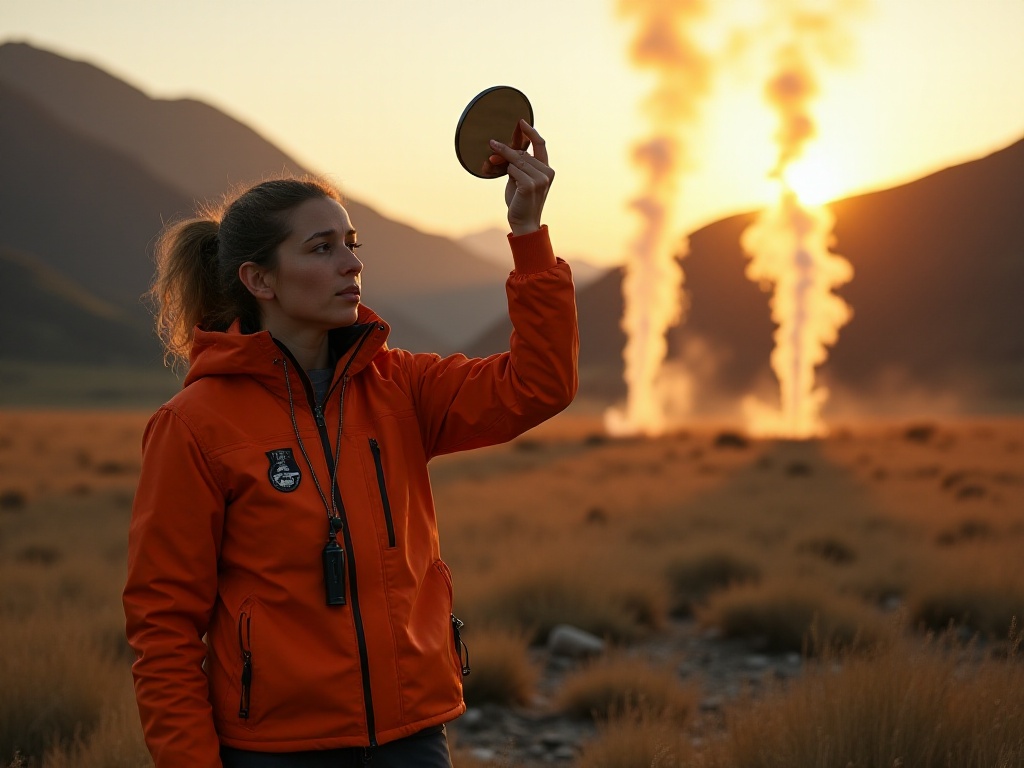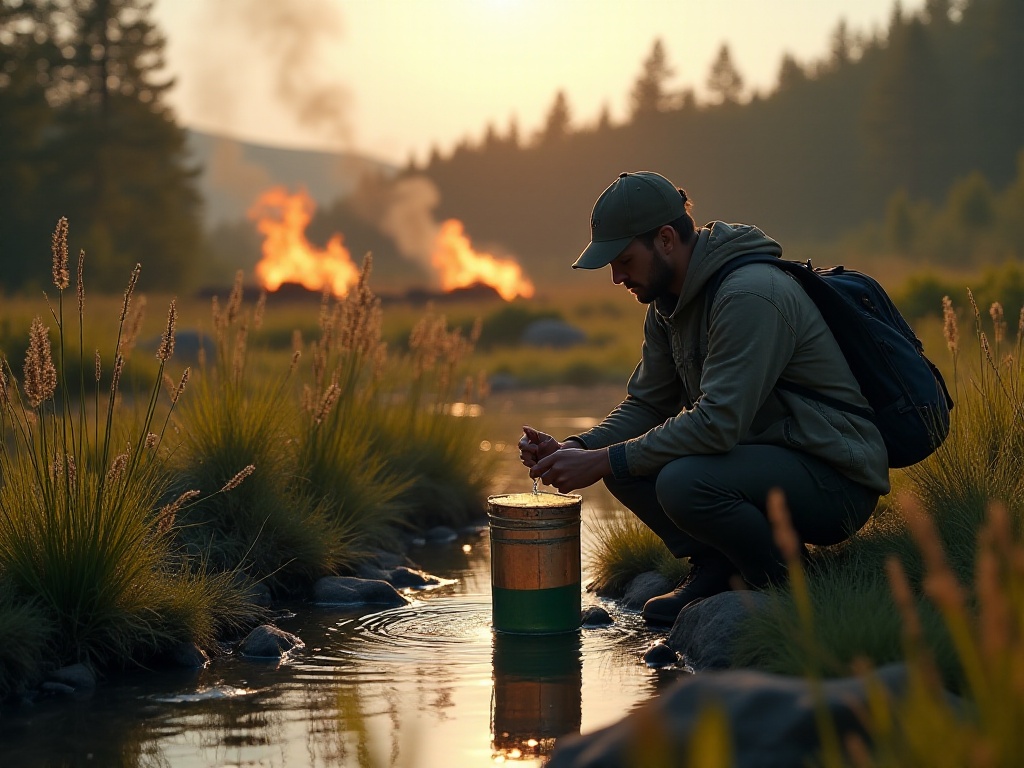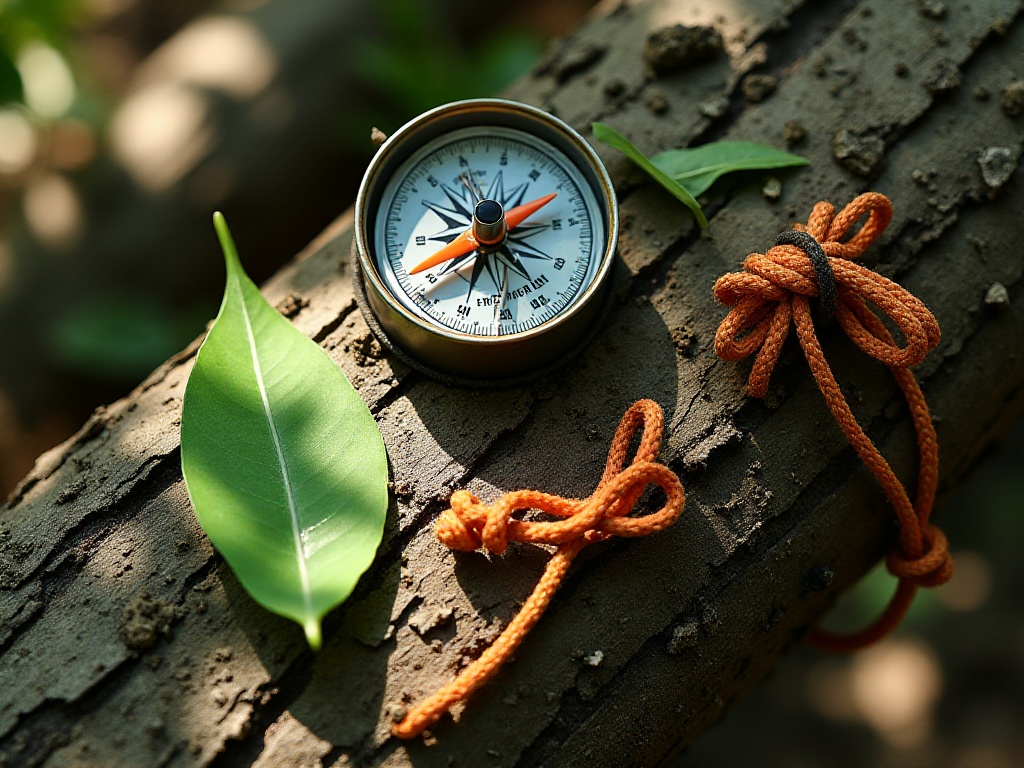Introduction
Hey friends! Do you often dream about hiking across vast grasslands or camping in forests? When watching outdoor vloggers' videos, do you admire their free lifestyle in the wilderness but feel intimidated by the challenges of survival in the wild?
Actually, wilderness survival isn't that scary. Anyone can become a qualified outdoor expert with the right methods and skills. As an outdoor enthusiast who frequently connects with nature, I deeply understand both the joys and challenges of wilderness survival. Today, let me share some practical wilderness survival skills to help you realize your adventure dreams.
Mindset Comes First
To be honest, the first time I camped alone, I was so nervous about the rustling leaves at night, fearing wild animals might suddenly appear. Every time I heard strange sounds in the distance, I would hide in my sleeping bag, unable to sleep all night. I really regretted choosing to camp alone then, thinking I was too rash.
But with experience, I gradually discovered that maintaining a calm mindset is the first essential element of wilderness survival. Many outdoor accidents happen not because the environment is dangerous, but because people panic in emergencies and make wrong decisions. Like when I got lost in the mountains once, I was terrified and almost started running randomly. Fortunately, I calmed down in time, remembered how to use a compass, and eventually found my way back to camp.
Remember one golden rule: always let family or friends know your specific itinerary and expected return time before departing. This way, if anything unexpected happens, rescue personnel can find you in time. Before each trip, I always share a detailed itinerary in my family group chat, including specific routes, estimated arrival times, and camping locations. This not only reassures my family but also makes me feel more secure.
Besides informing family about your itinerary, I suggest doing thorough research before departure. Learn about the destination's terrain, weather conditions, and wildlife distribution. I search online for other travelers' experiences to see what needs special attention. Also evaluate your physical condition and choose routes and difficulty levels suitable for you.
The most important aspect of wilderness survival is learning to think independently and solve problems. Once I encountered a rainstorm in the wild, and my tent was damaged by strong winds. Although I was nervous, I told myself to calm down and find a solution. Using tools I carried and some branches, I successfully repaired the tent and safely got through the night. This experience taught me that rational thinking is much more important than blind panic when facing difficulties in the wild.
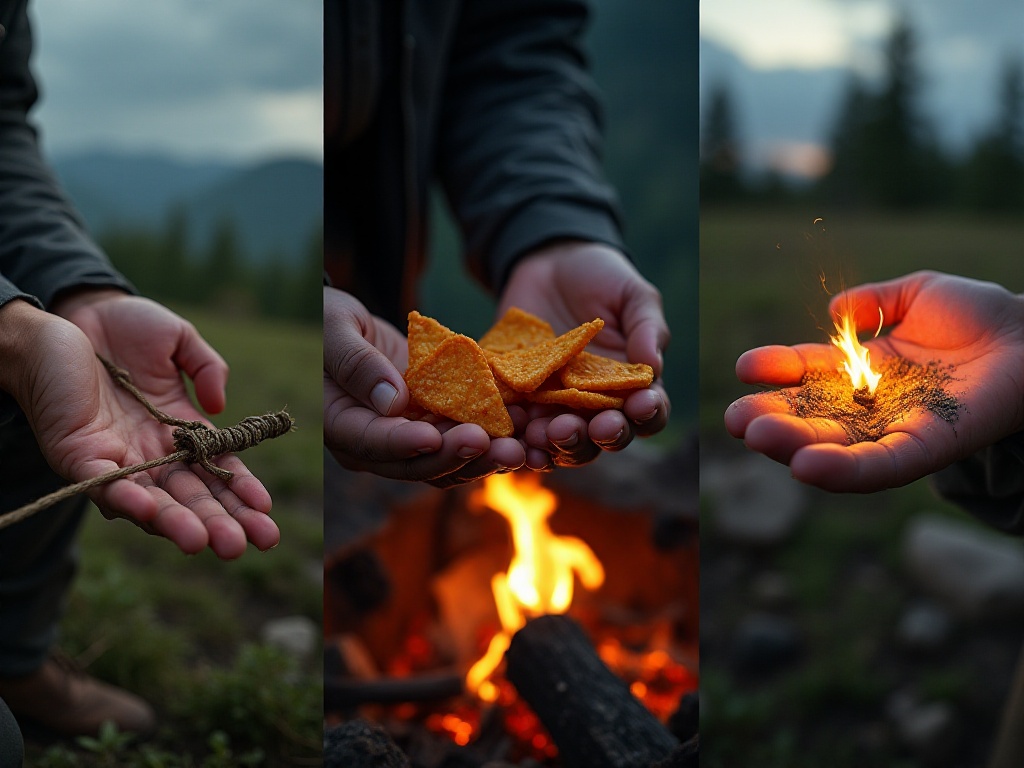
Equipment Checklist
When it comes to wilderness survival, selecting and carrying equipment is a crucial topic. Many beginners ask: what equipment should I bring? Let me share a battle-tested checklist.
First are the three life-saving essentials: flashlight, first aid kit, and multi-tool. These are absolute must-haves for wilderness survival. Choose a waterproof flashlight and bring spare batteries, because in the wild, light source equals life. I once experienced a flashlight running out of power, and that feeling of complete darkness was terrifying. Now I always carry two flashlights - one high-powered primary and one portable backup.
The first aid kit should include band-aids, bandages, antiseptic, and other basic supplies. From my experience, band-aids and antiseptic are used most frequently. It's easy to get scratched by branches or cut by rocks while walking outdoors. Additionally, I prepare some common medications like pain relievers, fever reducers, and anti-diarrheal medicine. After all, even minor ailments can affect your entire trip in the wilderness.
For multi-tools, choose one with knife and plier functions. I currently use a 15-in-1 multi-tool that includes basic knife and pliers, plus bottle opener, screwdriver, and other functions. This tool has helped me solve many problems, from cutting rope to repairing equipment, from opening cans to turning screws - truly an all-purpose assistant for wilderness survival.
Next is waterproofing preparation, which is equally important but often overlooked. I learned this lesson the hard way when my negligence led to all my dry food getting soaked. That experience taught me the importance of waterproofing. Now I always use waterproof inner liners or large garbage bags to waterproof my backpack, which works extremely well. Waterproofing measures are especially crucial during rainy seasons.
Besides waterproof bags, I also prepare some waterproof sealed bags to categorize important items. Things like phones, cameras, and maps that shouldn't get wet are stored separately in sealed bags. This way, even if the backpack gets wet, these important items stay dry.
Regarding clothing, I recommend using a layered approach. The innermost layer is moisture-wicking base layer, middle layer is warm fleece, and outer layer is windproof and waterproof jacket. This combination can handle various weather changes. Remember one principle: better to bring one extra piece than one too few. Weather in the wilderness is unpredictable, and staying warm is crucial.
Shoe selection is also key. Choose waterproof, non-slip, breathable hiking boots. I once went hiking in regular sneakers and ended up with sore feet from the gravel, almost spraining my ankle. Since switching to professional hiking boots, walking has become much easier. Plus, hiking boot soles have deep treads that prevent slipping on muddy trails.
Backpack selection requires consideration too. Choose appropriate size based on trip length. I usually use 30-40L packs for short hikes and 60L+ for long camping trips. Preferably choose packs with rain covers and plenty of compartments for better organization of equipment.
For supplies, besides dry food and water, I bring high-calorie chocolate and energy bars. These foods are small and light but can quickly provide energy when needed. Water supply should be adequate, generally at least 2 liters per day recommended. If worried about running out, bring portable water filters or purification tablets.
Communication devices are essential too. Besides phones, I bring power banks and two-way radios. Although there might not be signal in the wild, these devices could be useful in emergencies. If possible, also equip a GPS locator for more accurate positioning.
Wilderness Skills
Building Shelter
In the wilderness, a safe shelter can protect you from wind and rain, helping you get through tough nights. I remember having no idea where to start when first needing to build a shelter. After multiple practices, I've now developed a fairly complete method.
First, choose a suitable location. Find a windproof spot, preferably on slightly higher ground to avoid water accumulation. Also check for dead trees or dangerous hanging objects that could become hazardous in strong winds. I usually build under large trees, which provide wind and rain protection while their trunks serve as support points.
Shelter materials are mainly gathered locally. Thick branches serve as the main framework, thin branches and leaves for coverage. My first build was crooked, but now I can set up a decent temporary shelter in 20 minutes. The key is mastering techniques, like selecting uniformly sized branches and laying covering materials from bottom to top for better waterproofing.
Once I encountered sudden heavy rain in the mountains, but fortunately built a simple shelter in time. Though not perfect, it did block most of the rain. Since then, I've put more emphasis on practicing shelter building skills. Now I can build various types of shelters based on different weather conditions and terrain features.
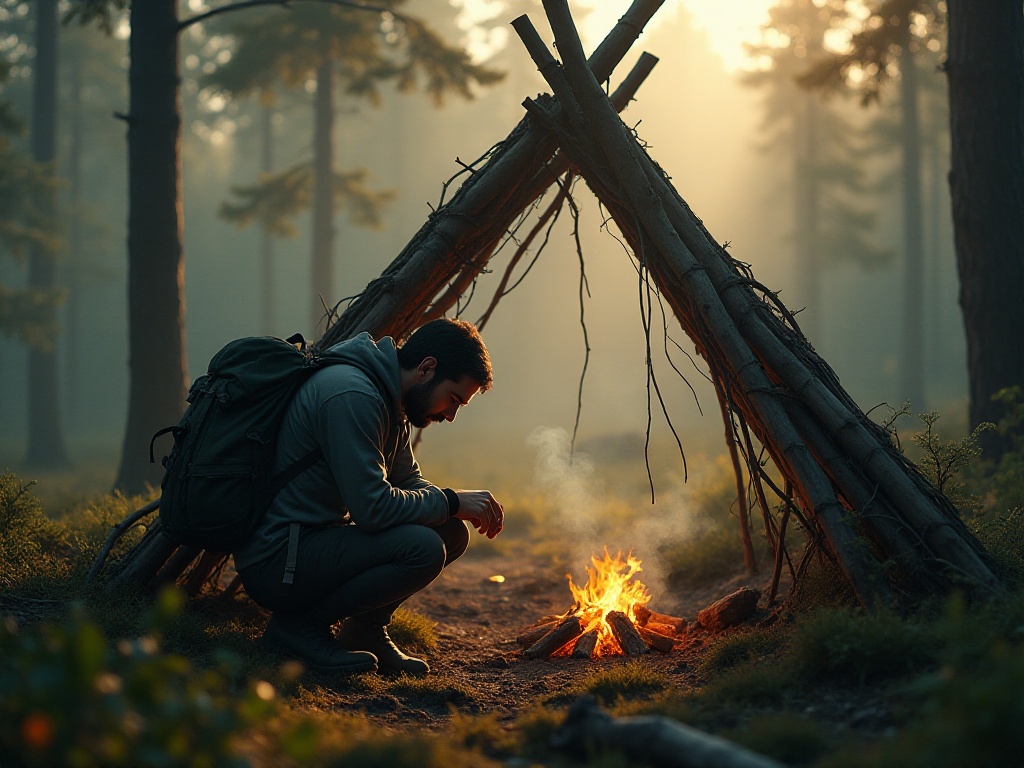
Fire Making Skills
Speaking of fire making, this is one of the most important wilderness survival skills. Fire provides warmth and light, and can be used for boiling water, cooking food, and keeping wild animals away. Let me share an amazing discovery: Doritos chips are actually super effective fire starters. Their oil and seasoning make them highly flammable. Of course, this is just for emergencies - normally you should prepare proper fire starters.
The most crucial part of fire making is preparing tinder. Besides professional fire starters, dry grass, tree bark, and paper are good choices. I usually carry some waterproof tinder like wax-soaked cotton balls or char cloth. These items are lightweight but extremely useful when needed.
Find dry twigs for firewood and arrange them from thin to thick. I often use the cone method, which is not only easy to light but also long-lasting. Specifically, first build a small cone with thin twigs in the center, then gradually add thicker branches outside. Start lighting from the tinder in the very center, letting the fire spread outward.
Making fire in wet conditions is challenging. Once I tried making fire in a post-rain forest and struggled greatly before succeeding. Later I learned a technique: in wet environments, look for dry wood inside trees or split thicker branches to use their dry inner parts. This wood is relatively dry and easier to ignite.
Maintaining fire is also an art. Pay attention to adding appropriate amounts of firewood - not too much to make the fire too big, not too little to let it die. If staying overnight, prepare some thicker wood to maintain longer burning time.
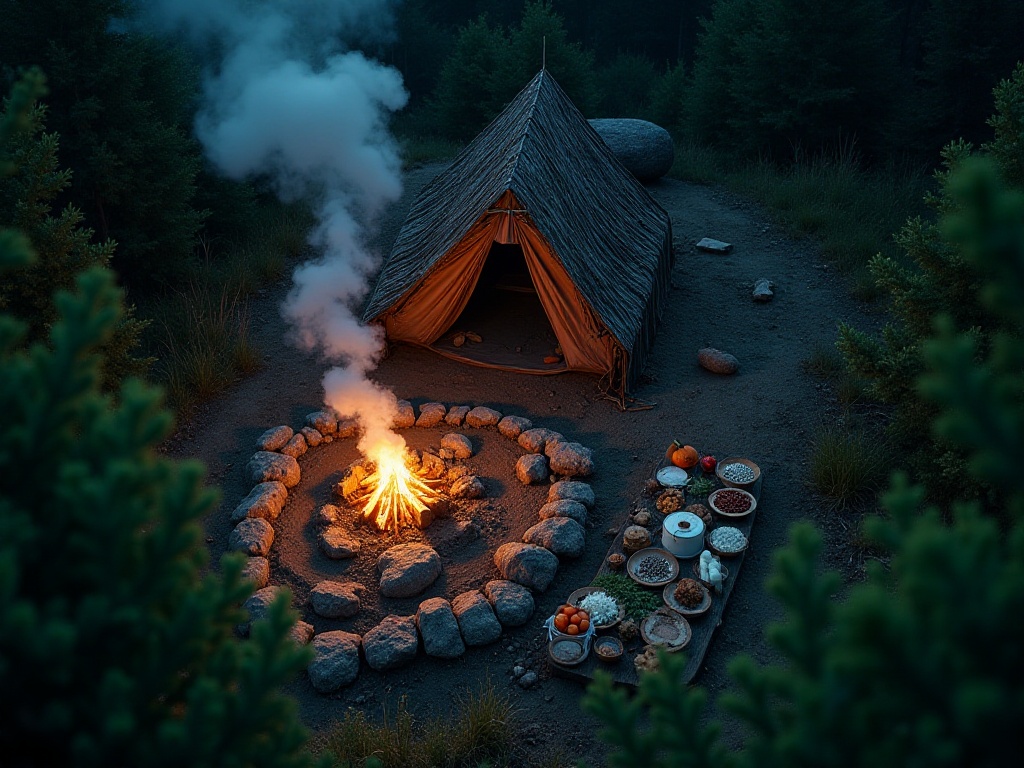
Water Source Treatment
In the wilderness, water is crucial. Without enough drinking water, people quickly develop dehydration symptoms. Here's a tip for identifying safe water sources: look for signs of animal activity. Generally, water sources frequently visited by animals are relatively safe. However, even water that looks clean should be treated before drinking.
When searching for water sources, pay attention to terrain features. Valleys and low-lying areas often have water sources. If you find moss or aquatic plants, there might be water nearby. Once during a hike, I followed animal tracks and successfully found a small stream.
If you don't have a water filter, boiling is the most reliable method. I usually boil water for an additional 3-5 minutes after it reaches boiling point to ensure harmful bacteria are killed. If conditions are limited, portable water filters or purification tablets can be used to treat water sources.
Once I ran out of carried water in the wilderness and found a mountain spring nearby. Although the spring water looked crystal clear, I still followed standard treatment procedures. In the wild, it's better to spend extra time treating water than risk drinking untreated water.
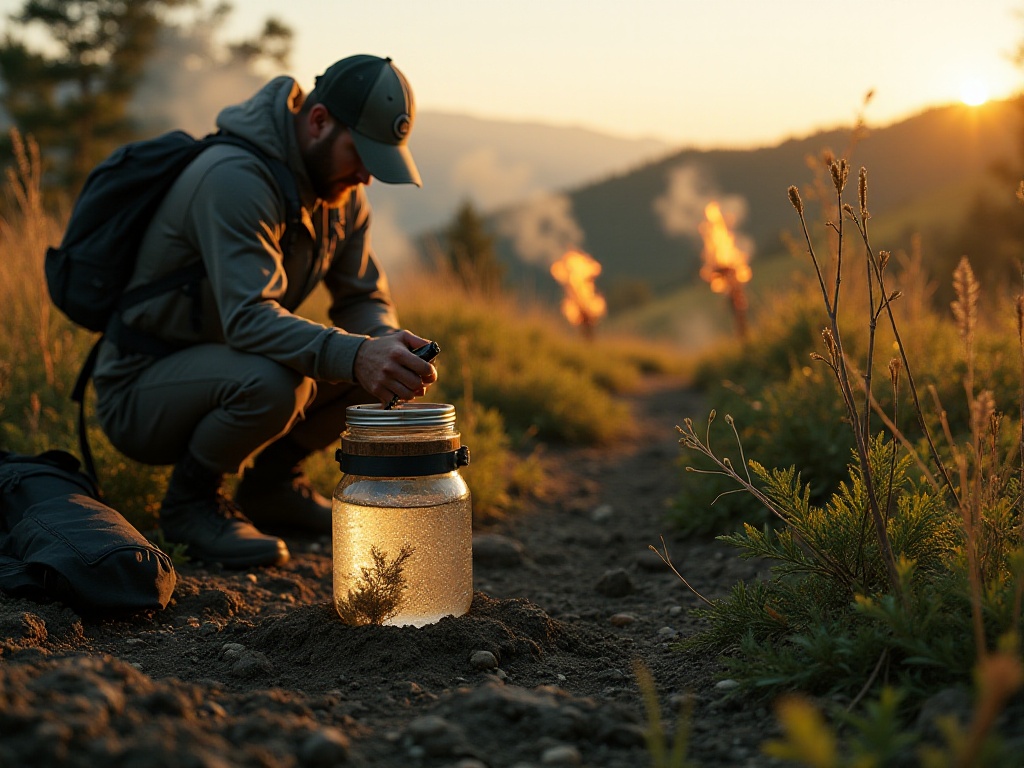
Practical Tips
Speaking of creative uses, duct tape is truly a wilderness survival miracle tool. It can repair equipment, serve as band-aids, and even secure temporary shelters. I always bring a roll wrapped around my water bottle, saving space while keeping it handy.
Once when my backpack strap broke, I temporarily fixed it with duct tape. Though not a permanent solution, it definitely solved the urgent problem. Later I used duct tape to repair tent holes, fix loose tool handles, and even seal food. Now I prepare two types of tape: regular fabric tape and waterproof tape.
Oh, and insect control is a big issue. If you find cattails in the wild, lighting them can effectively repel mosquitoes. This is an old-timer's trick that I've tried many times with great results. Mugwort has similar effects.
In the wilderness, many common plants can be useful. Dandelion leaves can be eaten raw for thirst quenching and vitamin supplementation; pine bark can be used for fire starting; some wild grasses have hemostatic effects. However, be especially careful not to try eating or using plants when you're unsure of their species.
Navigation skills are also important. Besides relying on compass and maps, observing natural phenomena can help determine direction. For example, moss usually grows on the shaded side of trees; ant nest entrances usually face south; tree rings are narrower on the shaded side. These natural indicators are especially useful when navigation tools aren't available.
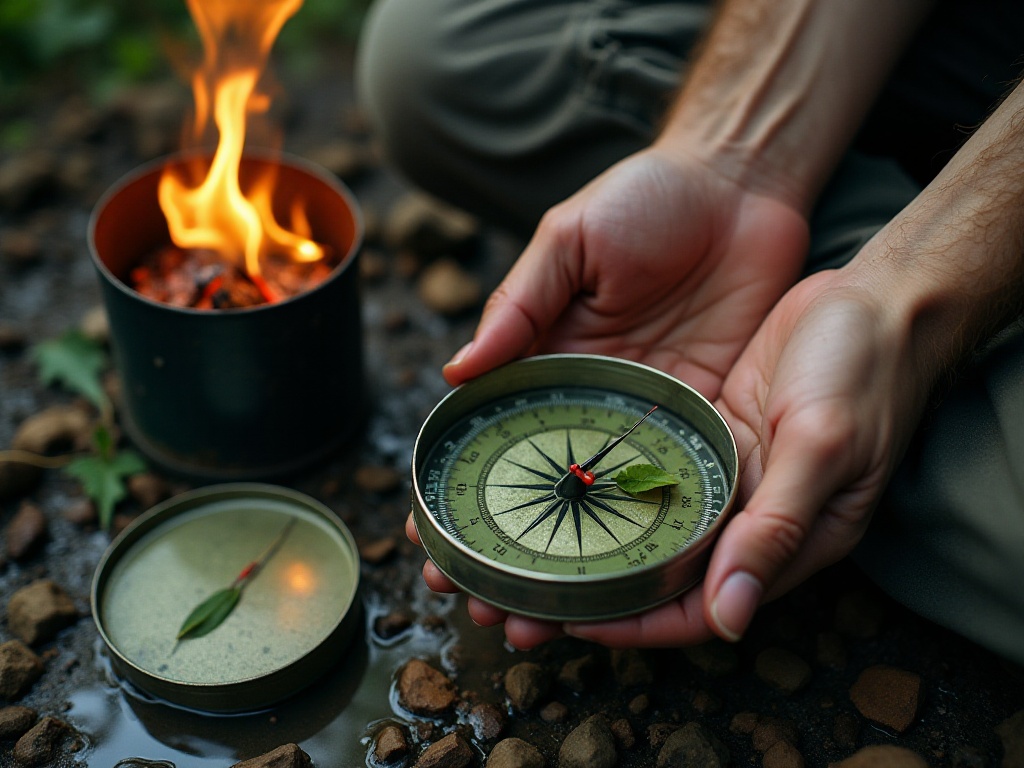
Conclusion
After reading this content, don't you feel wilderness survival isn't as scary as imagined? Remember, the most important things are maintaining a calm mindset, bringing necessary equipment, and mastering basic survival skills. Wilderness survival isn't just a challenge, it's also a process of enjoying nature and understanding yourself.
Next time you have a chance, try starting with short camping trips and gradually accumulate experience. You can first choose relatively populated campsites or join professional outdoor team activities. As you gain experience, your confidence will grow and skills will improve. Maybe you'll fall in love with this nature-close lifestyle like I did?
By the way, do you have any wilderness survival experiences to share? Or questions about the techniques mentioned? Welcome to tell me in the comments. Let's exchange ideas, improve together, and become better wilderness experts!




